What Makes Polish Pottery Colors So Unique and Vibrant?
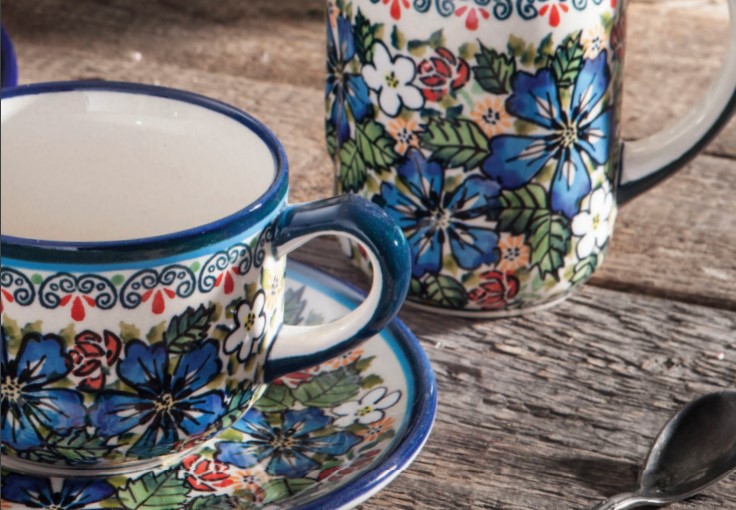
Polish pottery is known for its captivating and lively colors. But have you ever asked yourself why that is the case?
The main reasons why Polish pottery is so colorful are:
- The artistry of people creating it
- The high-quality materials and pigments used during production
- The age-old layering techniques employed by skilled craftsmen
From the traditional blue and white patterns to the rich and bold shades, each piece tells a story of artistry. It's the result of countless hours of work and centuries of technical advancements.
Here's a deep dive into the beauty and innovation that make Polish pottery truly extraordinary.
Key Takeaways
- Polish pottery colors are inspired by nature and traditional blue and white patterns.
- The use of high-quality pigments and layering techniques creates rich and bold shades.
- Various techniques, such as hand-painting, sponge-stamping, and wax-resist, contribute to vibrant colors.
- The careful selection and combination of materials, such as special clay and glaze, enhance the brilliance of Polish pottery colors.
Traditional Blue and White Patterns
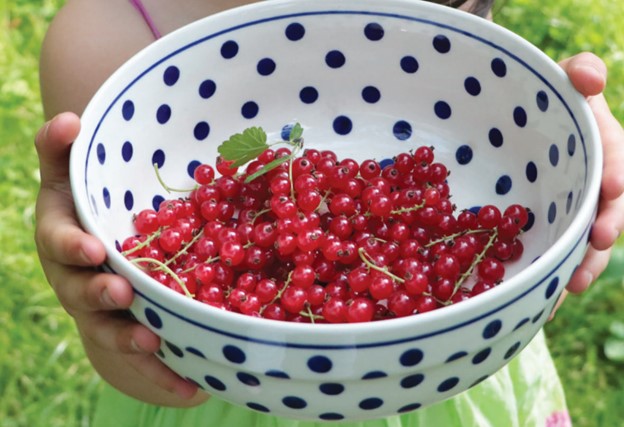
If you've ever wondered about the story behind the traditional blue and white patterns in Polish pottery, here's a brief history.
These patterns, known as 'peacock's eye' or 'eye of the peacock,' date back to the 17th century. They resemble the majestic feathers of a peacock.
These designs began in the town of Bolesławiec in southwestern Poland. This is where the first pottery workshops sprung up.
With time, the town's craftsmen started to create intricate designs inspired by their surroundings. Elements from nature, such as flowers, birds, and geometric shapes, became part of their creations.
- The striking blue color in these patterns comes from cobalt oxide. This substance has been used for centuries to give pottery this distinctive hue. Still in use today, it helps to create the iconic blue.
- In contrast, the white background is the result of a special type of clay known as 'kaolin.' This clay is notable for its bright white color.
Creating these classic blue and white patterns is a meticulous process. Artisans hand-paint each piece of pottery with fine brushes.
The pottery is then fired in a kiln at high temperatures. This process seals the colors and gives the pottery its durability.
The traditional blue and white patterns of Polish pottery are more than just beautiful. They represent a rich cultural heritage.
Today, they're cherished and celebrated not only in Poland but around the world.
Rich and Bold Shades
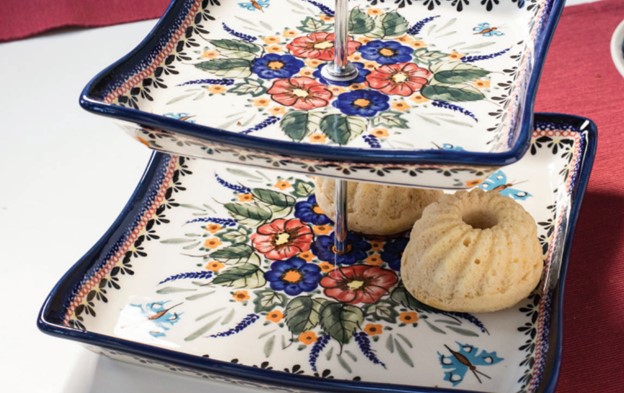
Every piece of Polish pottery is the result of a refined pottery-making process honed over centuries.
The use of high-quality pigments is one reason why Polish pottery is so vibrant. The artisans carefully choose these pigments to generate long-lasting, intense colors. They possess an in-depth understanding of color theory, helping them make visually striking pottery.
The firing process is another contributor to the richness of Polish pottery colors. The pottery is heated at very high temperatures. It allows the pigments to merge with the clay, creating deep, radiant colors.
The firing process also gives the pottery a shiny finish, enhancing the color brilliance.
The intricate patterns and designs on Polish pottery also enhance the color vibrancy. Artisans often layer multiple colored glazes to create these complex patterns.
This technique adds depth to the colors, making them appear more dynamic.
Techniques for Creating Vibrant Colors
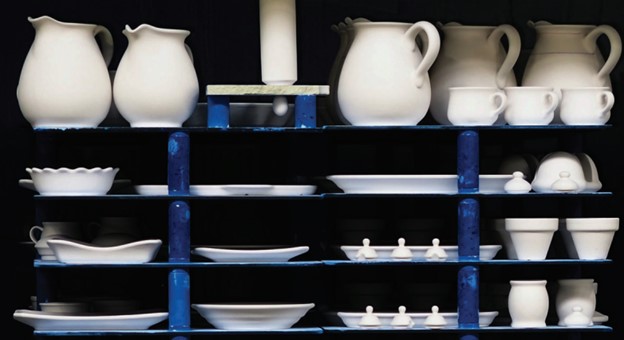
Artisans use a range of techniques to bring to life the vibrant colors we see in Polish pottery. These methods are passed down through generations. It helps to keep the rich tradition of Polish ceramic artistry alive.
Let's explore three main techniques that help create the unique, bright hues seen in Polish pottery.
- Hand-painting: Artisans use this method to paint each piece of pottery by hand. They use tiny brushes and special ceramic paints for this purpose. The result is stunningly detailed patterns and designs. Adding multiple layers of paint brings out the vibrancy of the colors. It gives the pottery an unequaled depth and richness.
- Sponge-stamping: This technique involves dipping a sponge in different colored ceramic paints. The sponge is then lightly pressed onto the pottery surface. It results in a unique, textured effect. The colors blend and overlap in a random yet harmonious way.
- The wax-resist technique: Here, a layer of wax is applied to certain areas of the pottery before painting. The pottery is then dipped into a colored glaze. The wax stops the glaze from sticking to the waxed areas. After firing, the wax is removed, revealing the natural color of the clay underneath.
Materials Used in Polish Pottery
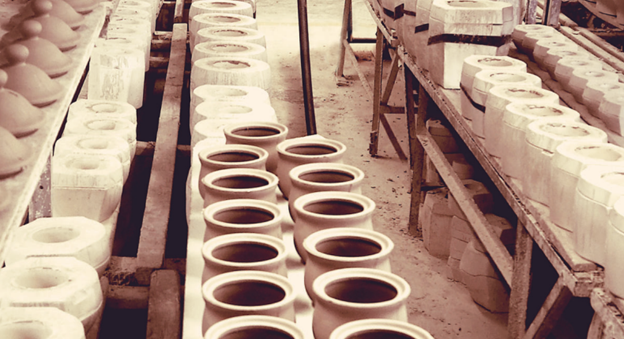
The final secret behind Polish pottery's striking, vibrant colors lies in the materials used during production.
The main material is a type of clay known as white firing clay or kaolin clay. This clay is sourced from specific regions in Poland, like Bolesławiec. What makes it so special is its high purity and fine texture.
The kaolin clay doesn't work alone, though. It's mixed with natural materials like feldspar and quartz. These extras make the clay stronger and more durable. The ratios are measured carefully to ensure the final product's consistency and quality.
Color is a big part of Polish pottery's appeal. To create these vivid hues, artisans use pigments or ceramic paints.
These aren't your ordinary paints. They're made from mineral-based compounds like iron oxide for red, cobalt oxide for blue, and chromium oxide for green. And to make these colors pop even more, they're mixed with a glaze before firing.
The glaze does more than just enhance the colors. It adds a glossy finish to the pottery. The glaze is a special concoction of silica, feldspar, and various metal oxides.
The specific composition of the glaze, including the choice of metal oxides, plays a significant role in the pottery's final appearance.
The brilliance of Polish pottery comes from a careful selection and combination of these materials. High-quality clay, pigments, and glazes are key.
The Bottom Line
In Poland, artisans have achieved mastery in crafting pottery with unique, eye-catching colors.
These vibrant colors can be attributed to specific techniques employed during the production process.
The materials used also play a significant role in the final appearance of the pottery. Both kaolin clay and high-quality pigments are critical to achieving the breathtaking pieces of pottery we all know and love.
The combination of all these elements results in a visually stunning and captivating art form that continues to be cherished worldwide.
Like a symphony of hues, Polish pottery enthralls the senses and leaves a lasting impression.
Frequently Asked Questions
Are there any health concerns associated with the materials used in Polish pottery?
There aren't. All pieces are made with non-toxic, lead-free paints and glazes. Your health is safe, so you can enjoy the unique and vibrant colors worry-free.
What are some examples of the materials used in Polish pottery besides clay?
The most commonly used materials include glazes made from minerals like cobalt, copper, and iron. When applied and fired onto the pottery, these minerals create vibrant colors and unique patterns.
How do the vibrant colors in Polish pottery hold up over time?
Generally, vibrant colors in Polish pottery hold up beautifully, like a kaleidoscope that never fades. The secret lies in the intricate glazing process, meticulously applied by skilled artisans. But proper maintenance is equally important.






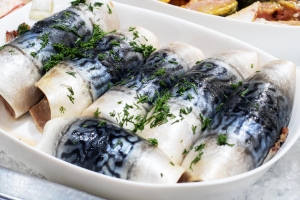
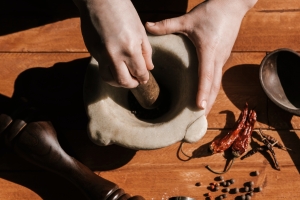


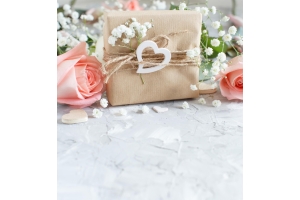
Validate your login
Sign In
Create New Account